Football
Hanging from a highway bridge in Madrid, an effigy of one of the world’s most famous Black soccer players stands as a graphic reminder of the racism that sweeps through European soccer.
In truth, they are everywhere. In Italy, where monkey chants swirled around the stadium in April as a Black player celebrated a goal. In England, where a banana peel thrown from a hostile crowd during a game in north London landed at the feet of a Black player after he scored a penalty. In France, where Black players from the men’s national team were targeted with horrific racial abuse online after they lost in last year's World Cup final.
Go outside Europe and you’ll find them, too. In Australia, where there were monkey noises and fascist chanting during last year’s Australia Cup final. In South America, where matches in the continent’s biggest competition, the Copa Libertadores, have been blighted by monkey chants. In North Africa, where Black players from visiting teams from sub-Saharan Africa have complained of being targets of racist chants by Arab fans.
The manifestation of a deeper societal problem, racism is a decades-old issue in soccer — predominantly in Europe but seen all around the world — that has been amplified by the reach of social media and a growing willingness for people to call it out. And to think that it was only 11 years ago that Sepp Blatter, the president of soccer governing body FIFA at that time, denied there was any racism in the game, saying any abuse should be resolved with a handshake.
The Black player currently subjected to the most vicious, relentless and high-profile racist insults is Vinicius Junior, a 22-year-old Brazilian who plays for Real Madrid, the most successful soccer team in Europe.
It was around the neck of an effigy of Vinicius that a rope was tied and the figure hung from an overpass near Madrid’s training ground in the Spanish capital in January. It was Vinicius who, two weeks ago in perhaps a defining incident for the Spanish game, was reduced to tears on the field during a match after confronting a fan who called him a monkey and made monkey gestures toward him.
It’s Vinicius who is emerging as the leading Black voice in the fight against racism, which continues to stain the world’s most popular sport.
“I have a purpose in life,” he said on Twitter, “and if I have to keep suffering so that future generations won’t have to go through these types of situations, I’m ready and prepared.”
Vinicius' biggest concern is that Spanish soccer authorities are doing little to stop the abuse, leading to racism being an accepted part of soccer in a country where he has played since he was 18.
Indeed, federations around the world have been too slow — in some cases, apparently unwilling — to equip themselves with the powers to sanction teams for the racist behaviour of their fans, despite being given the authority by FIFA to do so since 2013.
Fines? Sure. Partial stadium closures? OK. But more stringent punishments, like point deductions or expulsion from competitions? They are typically reserved for matters such as financial mismanagement, not racial abuse of players.
The result is frustration and a sense of helplessness among Black players and those wanting to protect them. Asked what he expects to happen after the Vinicius incident, Real Madrid coach Carlo Ancelotti said: “Condemning is not enough. Nobody has done anything in a way that makes this problem go away.”
When racism was rife in English soccer and hooliganism was on the rise, Black players were only just beginning to integrate into some of the league’s biggest teams.
Liverpool, arguably the most famous soccer club in the world at the time, fielded its first Black player in 1980. Chelsea followed two years later by bringing in Paul Canoville.
The Chelsea player was regularly called “the N-word,” often told to “go home” and had bananas thrown at him.
There was no safety net for Canoville or other Black players being racially abused — a problem epitomised by a heart-wrenching photo of Liverpool great John Barnes kicking a banana off the field with his heel in 1988.
“Five thousand people behind the goal singing ‘Black this, Black that.’ That’s difficult to play in front of,” said Mark Bright, who played for several English clubs in the 1980s and 1990s and is now an ambassador and talent scout for one of his former teams. “Black guy scored a goal and they didn’t like him and monkey chants come out.”
“The TV companies failed us, the radio failed us, the (Professional Footballers’ Association) failed us,” Bright, now 60, told the AP. “They didn’t make a stand against it.”
Anti-racism campaigns and slogans are welcomed but increasingly viewed as tokenism, especially when fines handed to clubs or federations for racial abuse committed by fans often are so pitiful.
Take the juxtaposition, in 2012, of European governing body UEFA handing the Spanish soccer federation a $25,000 fine for fans directing racial abuse at a Black player for Italy during the European Championship with, around the same time, a Denmark player getting fined five times that amount for revealing underpants with the name of a bookmaker on it.
Experts believe the global outrage, widespread reaction and outpouring of support for Vinicius following his latest abuse could mark a turning point in the fight against racism in Spain. It certainly struck a chord in Brazil, where there were protests outside the Spanish Consulate in Sao Paulo, while the Spanish league is now seeking to increase its authority to issue sanctions. Its protocol up to now has been to detect and denounce incidents and pass evidence to courts, where cases are typically shelved.
Jacco van Sterkenburg, a professor of race, inclusion and communication in soccer and the media at Erasmus University in Rotterdam, said explicit racism in stadiums is more accepted and normalised in some parts of Spanish and southern European soccer culture compared to places like England and the Netherlands, where the media, former players and soccer federations have openly addressed the issue.
“When, as a football association, you don’t take a firm stance against it and you don’t repeat that message time and time again, it will reappear,” Van Sterkenburg said in a video call. “You have to repeat the message that this isn’t allowed, this isn’t accepted."
"When nothing happens, you should still repeat this message. Some clubs have programs in place where they repeat the message, even when nothing happens. It sets the norm, continuously.”
Soccer needs outside help with racism and gets it through anti-discrimination campaigners such as Kick It Out in Britain and LICRA in France. The Fare network, a pan-European group set up to counter discrimination in soccer, places undercover observers in crowds at Europe's biggest games to detect racist chants and extremist symbols on banners.
As for the Black players themselves, some — such as Vinicius and others like Samuel Eto'o, Mario Balotelli and Romelu Lukaku — call out the abuse when they see it, intent on leading the fight against racism. That's something Paul Canoville, the target of racist insults as the first Black player of English club Chelsea in the 1980s, wishes he had done.
“They should say something right there and then,” Canoville said of Black players. “I didn’t at that time and I’ve had to learn from that. That’s something I teach to up-and-coming players now.”





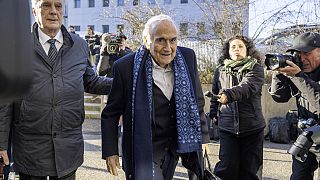
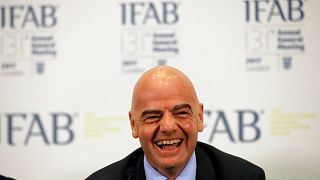

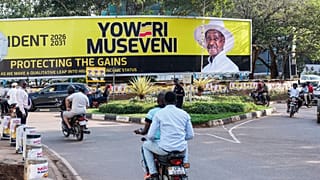
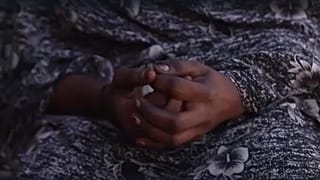
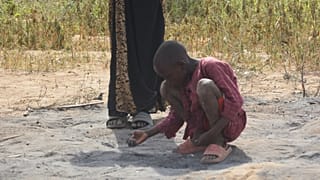
00:49
Nigeria: Ex-justice minister Abubakar Malami granted bail in money laundering case
00:56
Algeria reach AFCON quarterfinal after dramatic win over DRC
Go to video
Patrice Lumumba lookalike goes viral supporting DR Congo at AFCON 2025
Go to video
AFCON four-year cycle change sparks coach backlash
01:03
Egypt reach AFCON quarterfinal after 3-1 win against Benin
00:47
Tunisia sack head coach Sami Trabelsi after crashing out of AFCON in Round of 16